Oklahoma’s mosaic of prairies, woodlands, wetlands, and waterways offers an abundance of specialized habitats where diverse plants and wildlife can flourish. The diversity of native species across Oklahoma is a point of pride and underscores the need to safeguard these fragile ecosystems. Ensuring future generations enjoy this natural heritage should be a priority for all residents.
Let’s explore 12 of the most problematic invasive species threatening Oklahoma’s natural heritage.
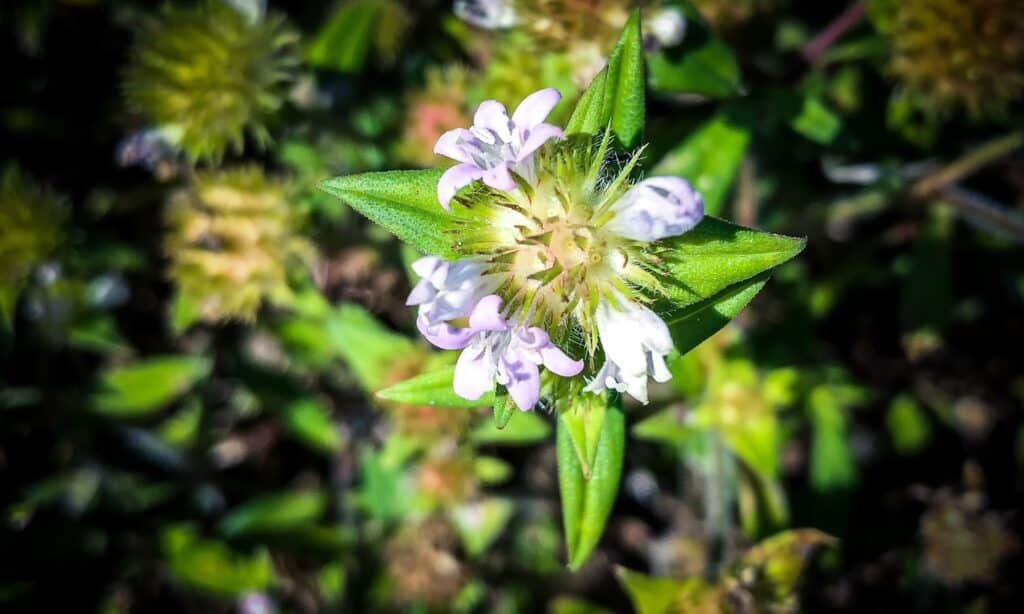
Mosquitoes love
alligator
weed.
©jaimie tuchman/Shutterstock.com
1. Alligator Weed
Alligator weed spreads rapidly and forms dense floating mats on the surface of water bodies, blocking sunlight and displacing native plants and animals. The hollow stems can also provide ideal mosquito breeding habitat. Alligator weed is very difficult to control once established.
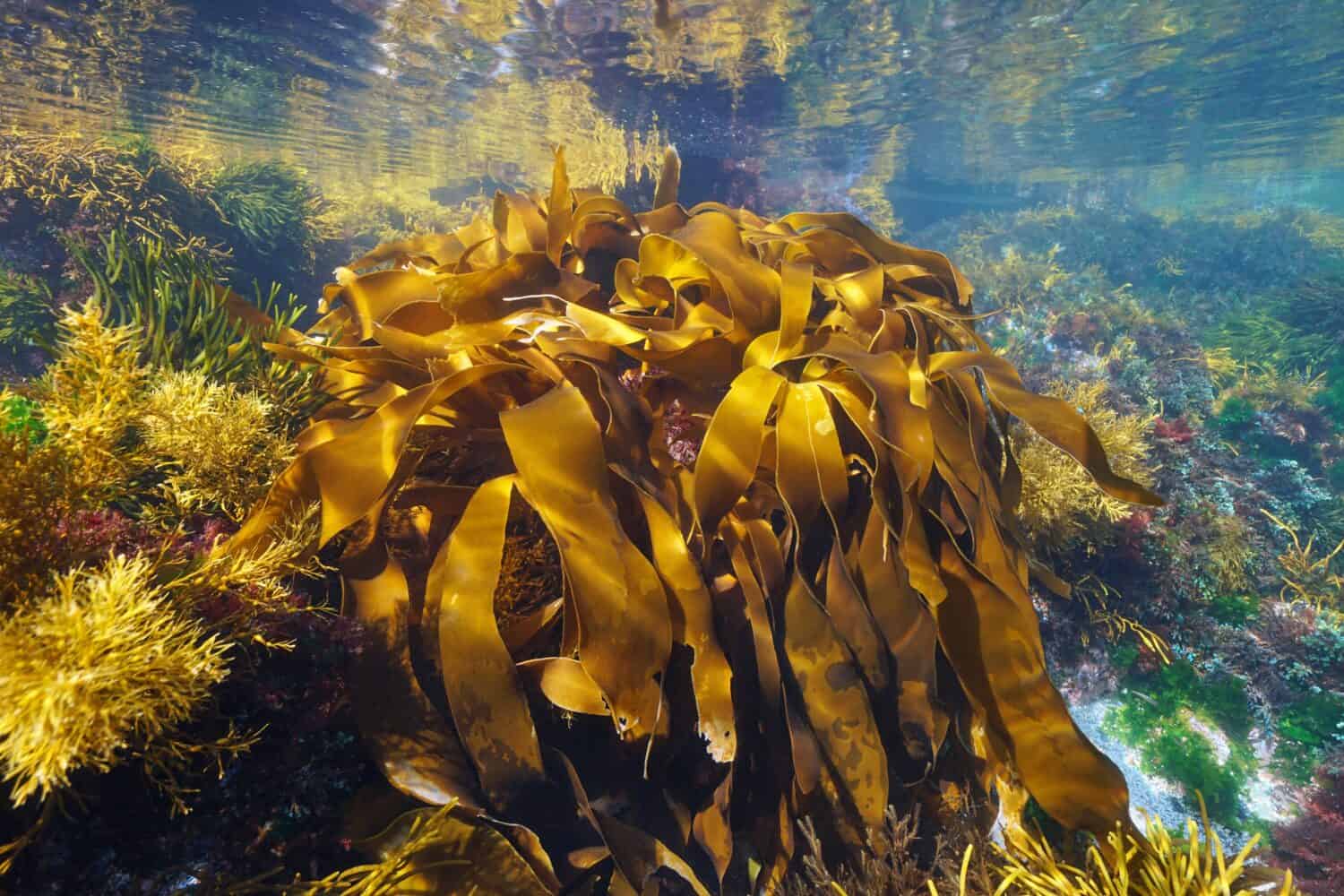
This golden algae is toxic to fish and other aquatic creatures.
©Damsea/Shutterstock.com
2. Golden Algae
Golden algae are tiny, microscopic organisms that release harmful toxins to fish and other aquatic creatures. They were unintentionally introduced into Oklahoma waters and have caused large fish kills in lakes and rivers. Golden algae thrive in water with high salt and nutrient content and can quickly multiply into dense blooms during optimal conditions.
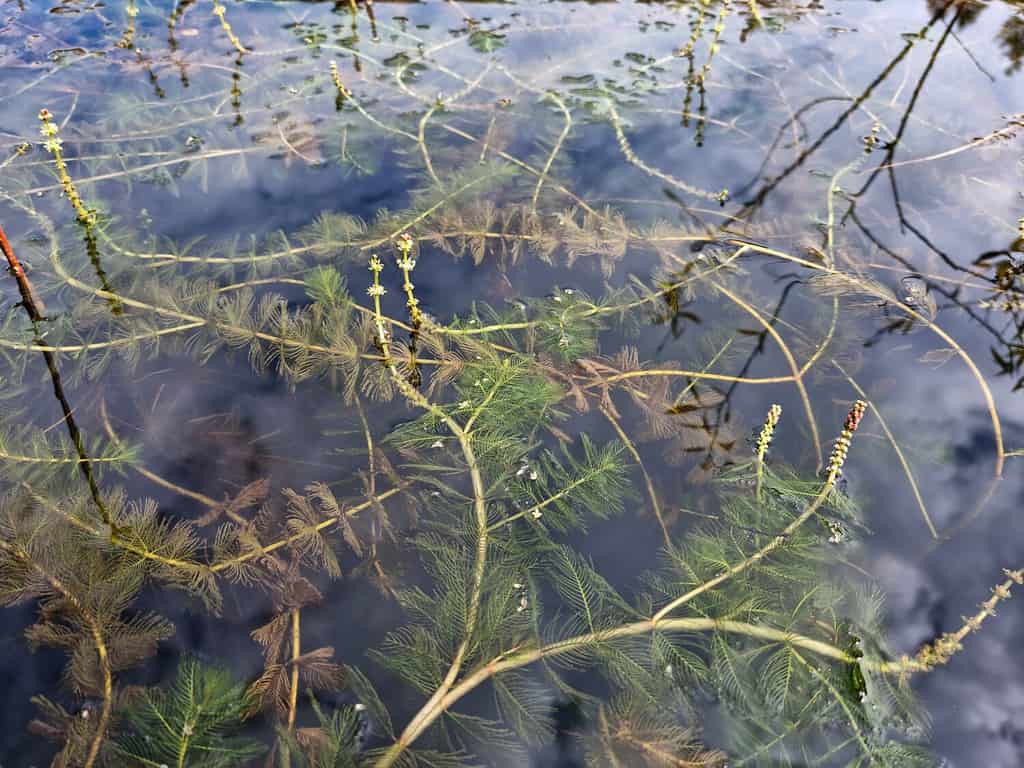
Trying to manage hydrilla is time-consuming and expensive.
©Binimin/Shutterstock.com
3. Hydrilla
The aquatic plant hydrilla exhibits rapid growth and can form thick, impenetrable masses across lake, river, and wetland habitats. Native to Asia, hydrilla was likely introduced in the US through the aquarium trade. In addition to out-competing native plants, hydrilla mats obstruct waterways, disrupt boating and swimming, and degrade water quality. Managing hydrilla is costly and labor-intensive.
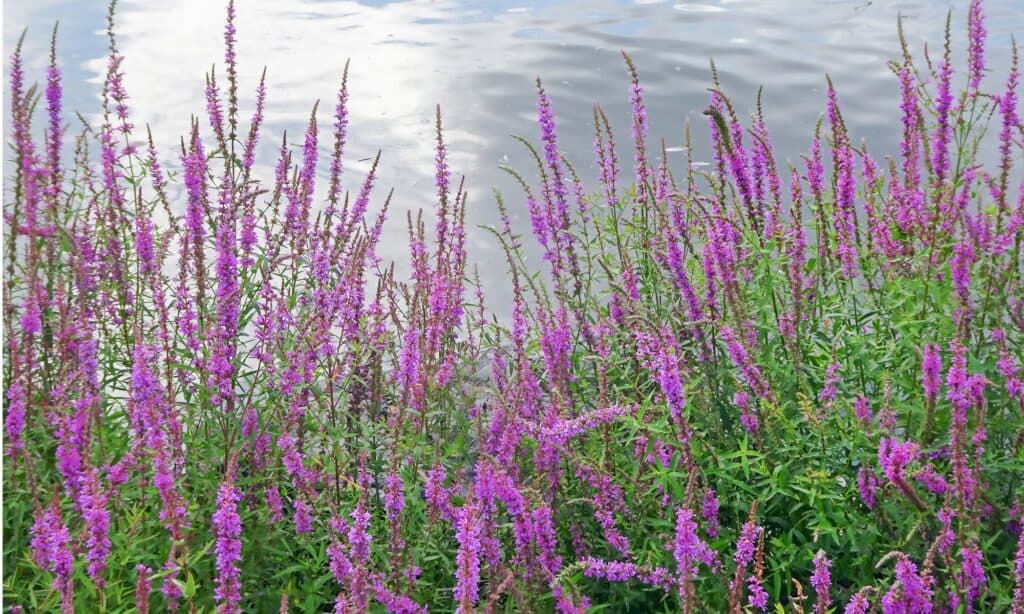
Purple loosestrifes are aggressively invasive.
©iStock.com/Natalia Kazarina
4. Purple Loosestrife
The beautiful purple flowers of this European perennial belie its aggressively invasive habits. Purple loosestrife can rapidly displace native wetland vegetation, degrading wildlife habitat and altering wetland hydrology. Each plant can produce millions of seeds annually, allowing loosestrife to form dense monocultures across North America.

Water lettuce spreads rapidly during the warm seasons in Oklahoma.
©SergeUWPhoto/Shutterstock.com
5. Water Lettuce
A free-floating freshwater plant, water lettuce forms dense floating mats on still waters like lakes, ponds, and slow-moving streams. Water lettuce shades out submerged native plants, reducing dissolved oxygen levels. It can clog water intakes. This tropical species is not winter hardy but spreads rapidly in Oklahoma’s warm seasons.
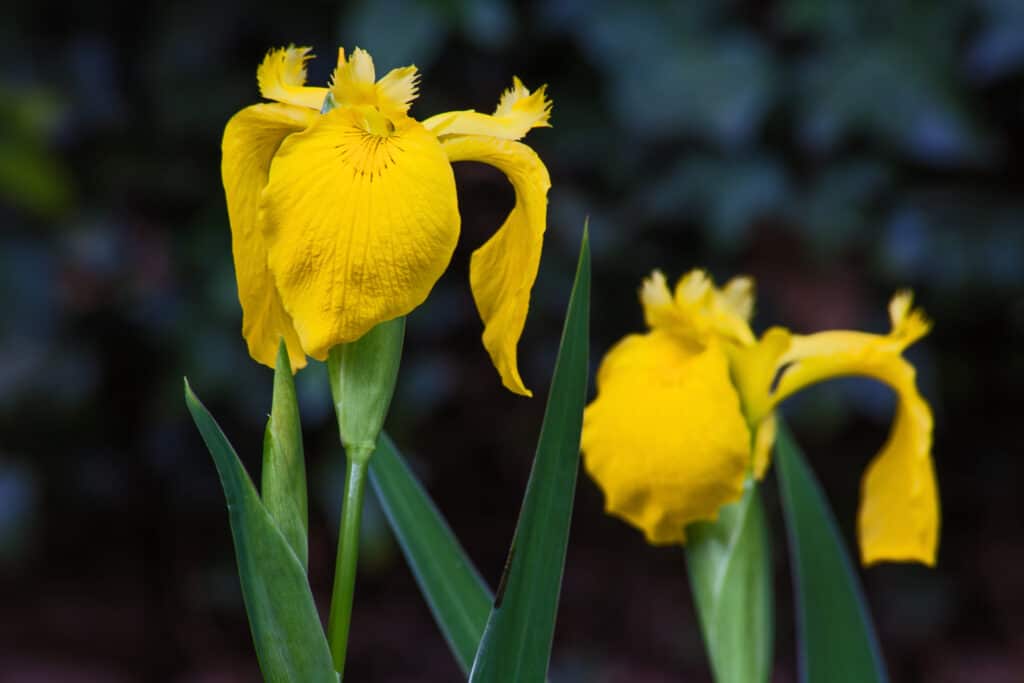
The yellow flag iris is difficult to pull out of the ground.
©iStock.com/kobuspeche
6. Yellow Flag Iris
The bright yellow flowers make this iris species popular in water gardens, but readily escapes cultivation. Yellow flag iris thrives along streambanks and marshy areas, where it crowds out native plants. It spreads aggressively through rhizomes and seeds and is difficult to pull or dig out. Herbicide application provides some control of large infestations.
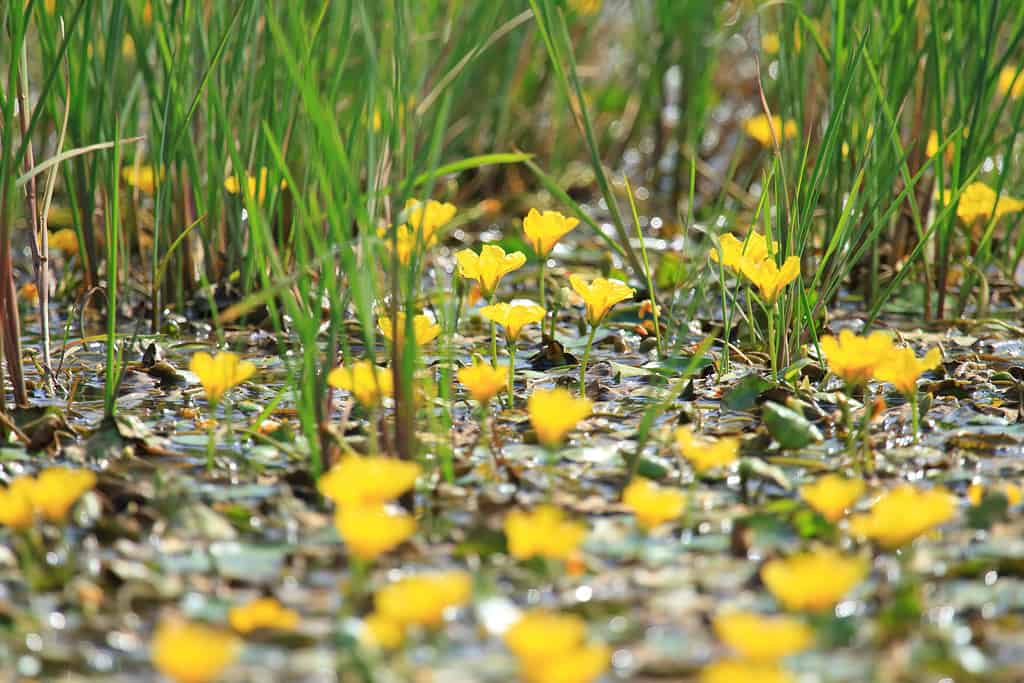
The yellow floating heart originated in Asia.
©Simun Ascic/Shutterstock.com
7. Yellow Floating Heart
Despite its appealing name, the yellow floating heart forms dense mats that crowd out native aquatic plants in lakes, ponds, and quiet streams. Originating in Asia, escaping ornamental specimens rapidly multiply by plant fragments. Removal requires manual harvesting or raking to clear infestations. Leaving any fragments behind leads to quick re-infestation.
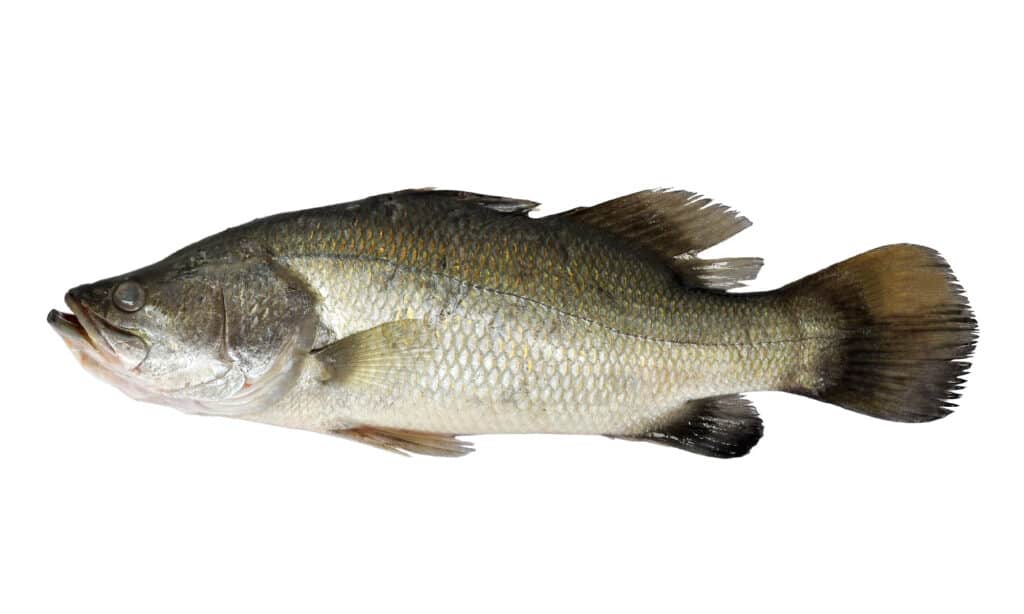
White perch were discovered accidentally but thrives in Oklahoma.
©daagron/Shutterstock.com
8. White Perch
While not aquatic, this fish species is still considered highly invasive in Oklahoma. White perch were introduced by accident but now thrive statewide, competing with native fish like white bass. White perch consume copious amounts of food and can alter zooplankton and aquatic invertebrate communities, disrupting the entire food web.
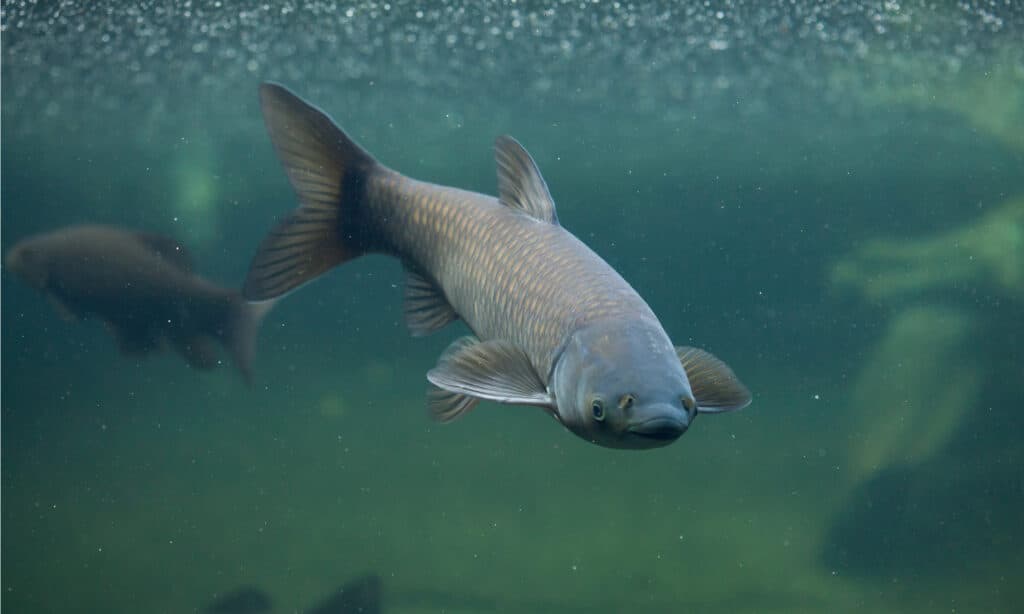
This grass carp was imported to control aquatic vegetation.
©Vladimir Wrangel/Shutterstock.com
9. Grass Carp
Grass carp are large fish native to Asia, imported to control aquatic vegetation. However, they feed voraciously on all forms of aquatic plant life. Escaped specimens can devastate native aquatic vegetation, severely damaging habitat for native fish and wildlife. Their presence alters entire ecosystems.
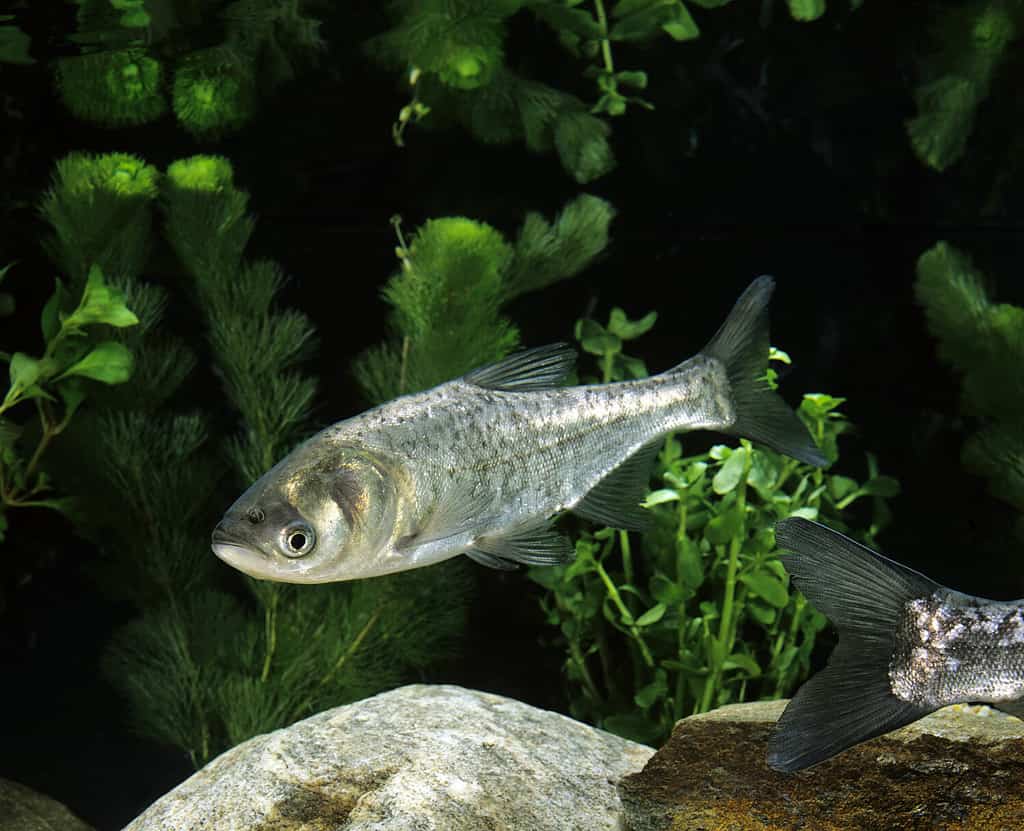
©slowmotiongli/Shutterstock.com
10. Silver Carp
Silver carp similarly escaped aquaculture facilities and have spread throughout Oklahoma. These high-jumping fish disrupt boating and recreation. They feed on plankton, severely depleted food sources for native larval fish and mussels. Fast reproduction and growth allow their populations to dominate water bodies quickly.
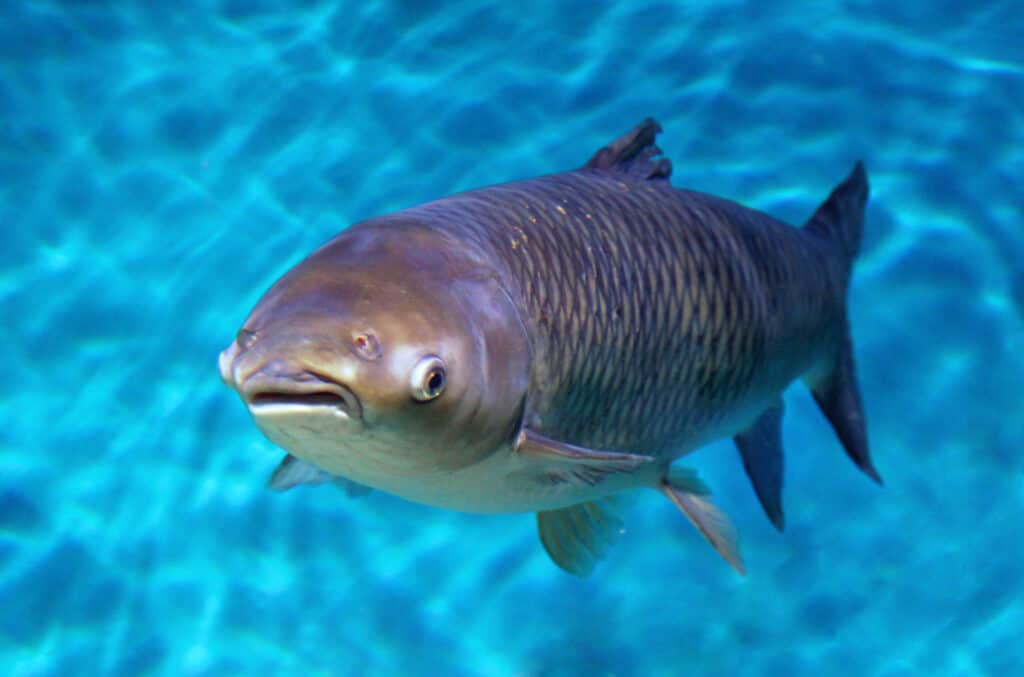
The bighead carp experience rapid growth.
©Katoosha/Shutterstock.com
11. Bighead Carp
Bighead carp have become invasive in Oklahoma waters, where they vie with native fish species for food sources and habitat. As bighead carp can consume large amounts of zooplankton, which many native fish species depend on for food, their presence can negatively impact native fish populations by competing for this shared resource. Bighead carp’s rapid growth and reproduction enable them to outcompete native fish frequently. Preventing the further spread of bighead carp and managing their populations is critical to protecting Oklahoma’s native fish diversity.
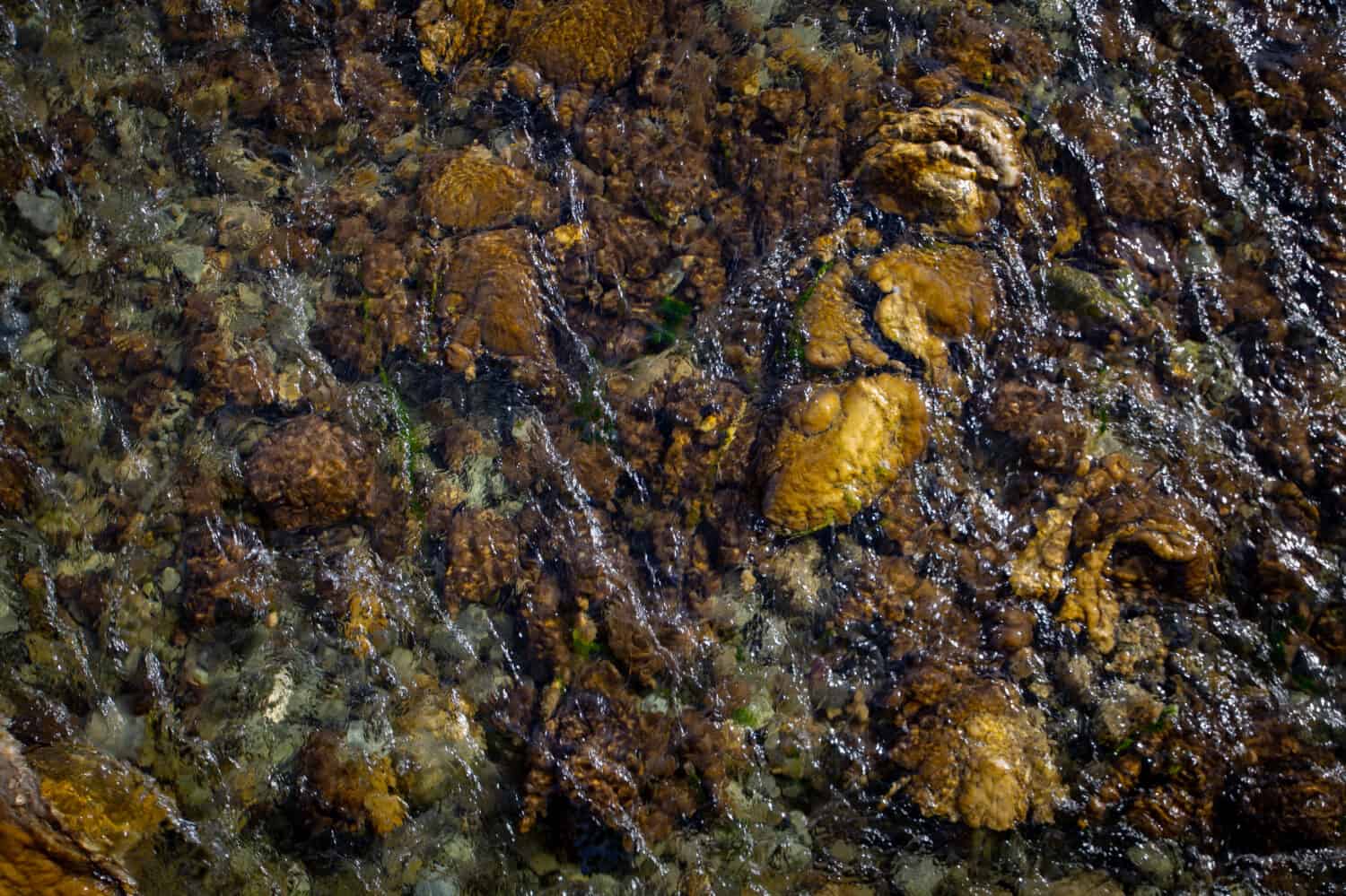
The invasive algae, didymo, forms on the bottom of rivers.
©Sheryl Watson/Shutterstock.com
12. Didymo
Didymo is not a plant or animal but an invasive algae. Blooms of didymo form thick mats on river bottoms, smothering aquatic plants, insects, and fish eggs. It attaches to fishing gear, boats, and other equipment, spreading to new waters. Once established, didymo blooms recur annually, degrading stream habitats and food webs.
Conclusion
Preventing accidental introductions and releases is crucial to reduce new infestations. Controlling established invasive species presents an ongoing battle, requiring public education, monitoring, and consistent long-term mitigation efforts. But combating invasive species is essential work to protect Oklahoma’s diverse natural heritage for future generations. Public involvement and cooperation with land and wildlife managers are key to success.
| Invasive Species in Oklahoma | |
|---|---|
| #1 | Alligator Weed |
| #2 | Golden Algae |
| #3 | Hydrilla |
| #4 | Purple Loosestrife |
| #5 | Water Lettuce |
| #6 | Yellow Flagiris |
| #7 | Yellow Floating Heart |
| #8 | White Perch |
| #9 | Grass Carp |
| #10 | Silver Carp |
| #11 | Bighead Carp |
| #12 | Didymo |
The photo featured at the top of this post is © Orest lyzhechka/Shutterstock.com
Thank you for reading! Have some feedback for us? Contact the AZ Animals editorial team.







